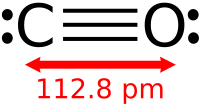
Photo from wikipedia
The carbon–carbon couplings of 4,4ʺ-dibromo-p-terphenyl (DBTP) on Cu(110) surface have been investigated at a single molecular level by scanning tunneling microscopy. After annealing at 353 K, a mixture of parallel non-organometallic… Click to show full abstract
The carbon–carbon couplings of 4,4ʺ-dibromo-p-terphenyl (DBTP) on Cu(110) surface have been investigated at a single molecular level by scanning tunneling microscopy. After annealing at 353 K, a mixture of parallel non-organometallic and organometallic intermediates of DBTP molecules along the [1]; [2]; [3]; [4]; [5]; [6]; [7]; [8]; [9] ; [10] direction of the surface has been observed. Further annealing at 393 K causes one group of molecules to form oligomers with para-para and para-meta motifs via Ullmann reaction and the other group of molecules to synthesize oligomers with meta-meta motifs via direct carbon–carbon coupling reaction. Statistical results directly reveal that the occurrence of reaction type is strongly related to the initial binding configuration of DBTP molecules.
Journal Title: Chinese Chemical Letters
Year Published: 2017
Link to full text (if available)
Share on Social Media: Sign Up to like & get
recommendations!